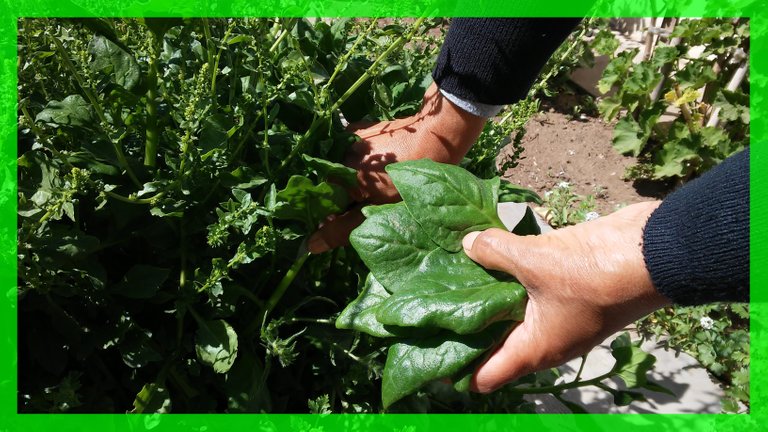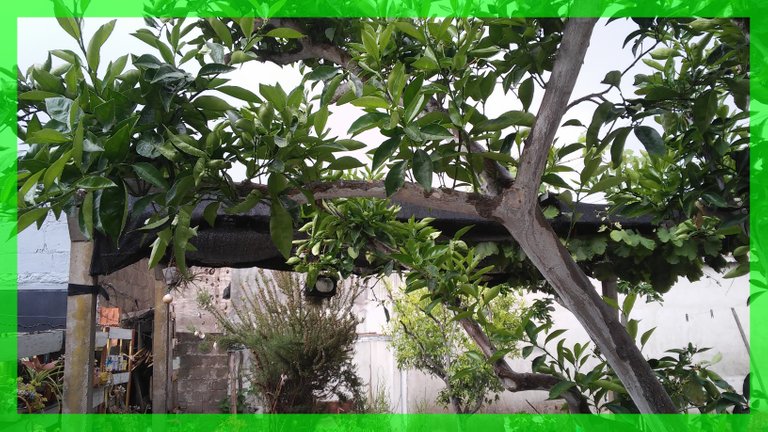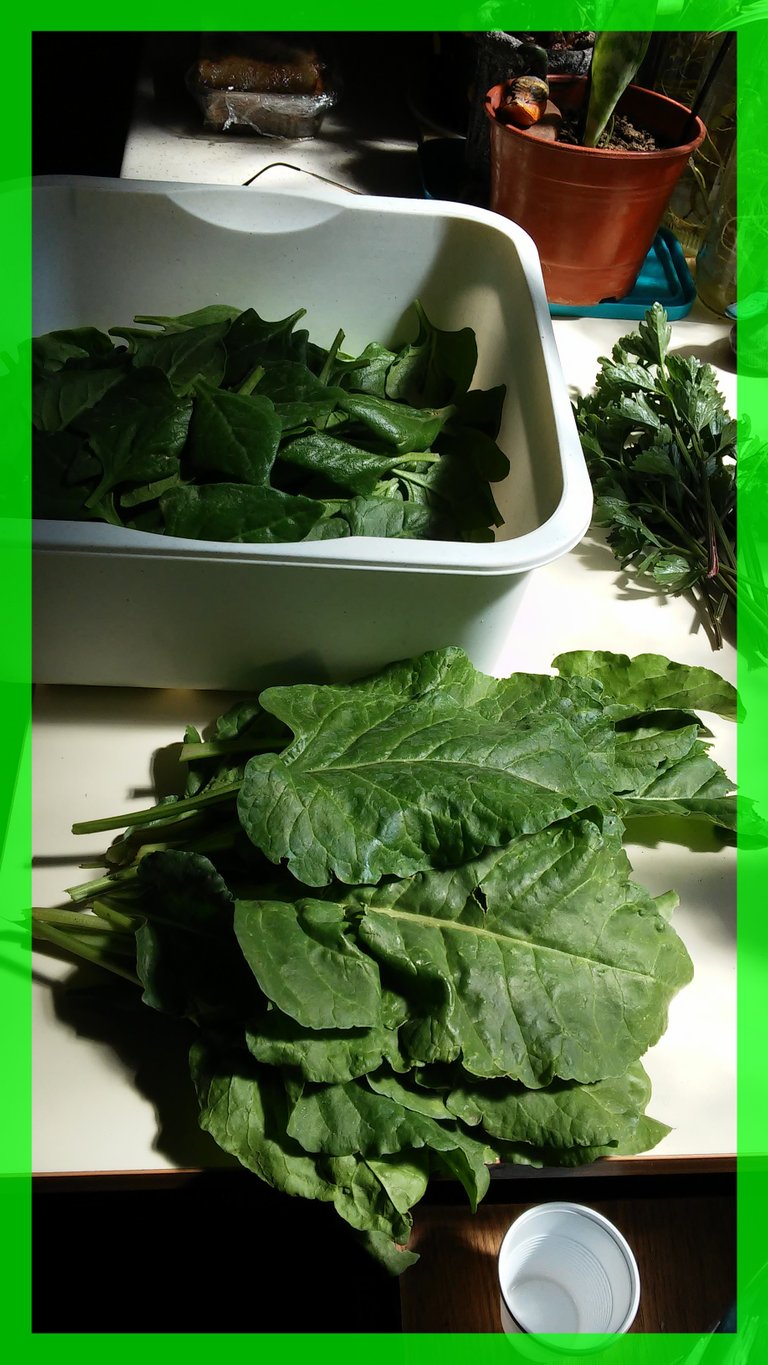
Rarely does the orchard look as resplendent as after the rain. The dull green of the leaves punished by the sun suddenly transforms into a radiant and brilliant green. The very dimensions of plant leaves and flowers seem to increase to the naked eye, minute by minute.

Rain is generally a blessing for the garden, the orchard and the campaign in general. As long as the rainfall is not so violent as to cause floods, landslides and other natural disasters. Even when the force of the water is too strong, especially in spring, the plants suffer many damages that cannot be seen with the naked eye, such as the fall of most of the flowers and small fruits.

The falling flowers are obviously period fruits, of any plant species, not just the fruit plants themselves. If they have already been pollinated and fall due to the force of the rain, it will be one less fruit to collect. If instead it is garden flowers, there will be many flowers that do not reach their beautiful fullness.

Luckily the rain these days in my town has been very slow and calm if we can apply this term to rainfall. In short, it has not been violent at all. Without wind, the water has gradually penetrated the earth, and has even been deposited on the trunk and foliage of the plants, helping not only to gently wash them, but also to remain on top of them for a while, favoring absorption as much moisture as possible. Total benefit for the garden and the orchard.

The plants that have not yet germinated seem to feel the call of the rain and suddenly appear breaking the earth and emerging on the surface. It is incredible to see how those same plants that, despite watering them every day, we could not get them to germinate, suddenly with the sole effect of the rain (as scarce as it may be) feel like a kind of call to come to the surface.

The most classic example is pumpkins. Every day I see some plant emerge from the earth with its classic well-shaped round leaves and with such rapid growth, especially at night, that they do not suffer too much from the strong midday sun and manage to survive without problems. From then on it's a kind of race against time because they gradually cover all the ground.

But it is not only time to look at the plants that grow but also, in some cases, it is time to start reaping the fruits of the labor. And when I say fruits, I am not referring to fruit-bearing plants, but to all the other plants that are ready to be harvested. Such as chard, parsley, spinach, etc.

After a couple of rainy days, of low intensity, ideal for the orchard -it did not rain more than 20 mm in short- the soil got perfectly wet slowly, the plants got wet for 48 hours at a fairly sustained rate and the operation picking up some leaves of chard and spinach and some sprigs of parsley looked auspicious. A golden rule: never cut the leaves by hand, preferably use a knife or scissors so that the cut is clean and does not favor the entry of germs and bacteria and/or parasites that can attack the plants.

The spinach had grown in these two days in a vertiginous way. It is an almost wild variety of spinach, creeping, that develops horizontally and if it is lucky enough to enjoy intermittent rains it produces an incredible amount of leaves. The leaves are not too big, they are shaped like an elongated heart, but what makes them really useful is the large number of leaves that they produce. It ends up transforming into a true and proper scrub like the one you see in the photo. And it was a single plant, almost insignificant before the rain. See how it has grown. To the point of almost completely covering last year's chard plants that are already beginning to go to seed.

In the next images I have to apologize for the quality of the photos. I wanted to get some images of the harvest before my wife processed the vegetables, but it looks like the cell phone's flash, or the cell phone itself, is somewhat exhausted, because the photos have come out a bit dark. In any case, although the visual quality of the images suffers, the products are also seen in all their splendor.

In this case we specifically picked chard, spinach and parsley. In what we have used these products you will be able to know if you continue reading this post and have the patience to reach the end. The first impression when cooking vegetables, even steamed, is something that causes disappointment because they reduce a lot and there is only a small amount that, compared to the natural leaves that we collected, seems insignificant.

However, what we obtain when cooking it and then processing it with the blender or robot is concentrated in such a way that, for example, a tablespoon of this compound is enough to integrate it into the flour and make any type of pasta as I show you at the end. Cannelloni, sorrentinos, noodles, capeletti, etc. One hundred percent Italian tradition.

Once dry, I collect these seeds, leave them to finish drying in a dry environment, even in the sun, and save them for next year's planting. Swiss chard can be sown throughout the year. In fact, in the previous post I talked about weeding and replanting the seedlings, some of them chard.

See the quality and quantity of spinach and chard that I have collected in just a couple of minutes. Fresh, fresh from the garden, still retaining all the aroma of fresh vegetables. Something that we cannot even dream of finding in the supermarket or even in the most prestigious grocery store in the neighborhood. The leaves still retain all the color as if they were on the plant.

My wife usually steams them so they don't lose their vitamins, then breaks them up into small individual packets and freezes them in the freezer for future use whenever she needs them. Some are transformed, for example, into delicious green noodles like the ones you see in the photo. It is enough to add a small amount of liquefied spinach to the flour with the minipimer mixer, the blender, the robot or the instrument that each user and in each country uses, mix everything and obtain a beautiful green, fresh, organic pasta, free of preservatives and artificial elements, and above all delicious.

Then they can be cut by hand with a knife or with the classic pastalinda-type machines, of Italian origin, that we can find in many family homes. In this way, the noodles will not only be the width that we prefer, but they will all be the same, of incomparable perfection.

If we add a homemade sauce to these noodles, with tomatoes from last year's garden, blended, packaged and left to rest for several months, we can only imagine the goodness of the food. The rest is pure fantasy. This type of wide tagliatelle in Italy is called "fetuchine" while the common tagliatelle is much thinner and is called "spaghetti". Tagliatelle ("tagliatelle") in Italian, proper, are the widest of all. But it is evident that the modality, uses and customs in each country change and we can find innumerable variants.

Or we can also transform them with the same green pasta with spinach or chard, in these delicious stuffed capellettis (usually with cooked ham, ricotta and some other ingredient that we want to add). The photos speak for themselves and are eloquent witnesses to the exquisite product into which we can transform our spinach or chard plants.

So true about how rain sometimes can be bad! Especially for seedlings. Those noodles look delicious!
It is true, rain is not always beneficial, very small plants suffer from it.
More than anything @jonyoudyer , he was talking about the effects produced by all the minerals that rainwater contains that normal water does not contain, and not about its intensity, which sometimes causes great damage.
Regarding plants, we have made tagliatelle, capeletti and other Italian specialties with spinach, chard and pumpkins that we grow in the garden.
Cheers
They look so good and healthy. Homegrown food gives extra taste to dishes, right?
The pasta and cappelletti look so good.
Apart from being delicious, they are very healthy because they are genuine products from my garden. Fresh, without adding preservatives or other artificial ingredients.
From the moment we collected, washed, processed, pasted and cooked (obviously with my wife, on whom most of the work fell), three hours would have passed @rem-steem
I can relate. They need so much work to do on them but the time worth it.
Enjoy 😊
Hi @goisal, your post has been upvoted by @bdcommunity courtesy of @rem-steem!
Support us by voting as a Hive Witness and/or by delegating HIVE POWER.
JOIN US ON
Thank you for supporting my content @bdcommunity
Thank you for sharing this post on HIVE!
Your content got selected by our fellow curator semarekha & you received a little thank you upvote from our non-profit curation initiative. Your post will be featured in one of our recurring curation compilations which is aiming to offer you a stage to widen your audience within the DIY scene of Hive.
Next time make sure to post / cross-post your creation within the DIYHub community on HIVE and you will receive a higher upvote!
Stay creative & hive on!
My thanks to @semarekha and @diyhub for selecting and curating my post.
Greetings to the whole team.
I love how you poetically started talking about the rain and its life-giving power, and then ended unexpectedly at the table with this amazing transformation from a young twig to a real meal on the plate. You make things look so easy and simple when the process is otherwise so long and difficult. 😊
What is said: from poetry to food. In Italy, a country where food and its preparation is a true art, it is said that it enters through the eyes before the palate. And they are very right.
In reality, the process is long and requires patience. A little time every day. But you have to be constant. Besides, for me it is a kind of therapy after having endured the consequences of Covid.
As always thank you for your words @soulsdetour